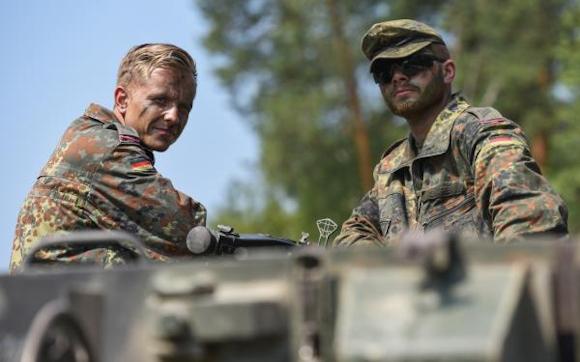Wagons save blood. He supported Generaloberst Guderian, theoretical maximum of the armored war.
While the armored component of the Italian Army (called Pesante) should undergo, in the next ten years, a highly questionable renewal, by updating the ARIETE tanks (brigades Ram e Garibaldi), the German Army (Heer), as per tradition, is paying particular attention to its armored component.
Currently, the German Armored Corps has five battalions (Gebirgspanzerbatallion) - one sixth is the subject of debate between the political parties -, of which five are operational and one in a framework position.
The five battalions are organically assigned to the two armored divisions of the Heer: the 1. Panzerdivision stationed in Saxony and the 10. Panzerdivision located in Bavaria.
Each battalion is divided into three squadrons - or Panzerkompanie - tanks (except the Gebirgspanzerbatallion 8 of the 10. Panerdivision which aligns only two squadrons), each equipped with 13 tanks (4 wagons per platoon), for a total of 44 vehicles (adding also the two tanks supplied to the command and combat support squadron).
 Of the five battalions only the Panzerbatallion 203 (1. Panzerdivision) is equipped with the LEOPARD 2A7 wagon (photo at the bottom), the other four are equipped with the LEOPARD 2A6 (photo) or A6M.
Of the five battalions only the Panzerbatallion 203 (1. Panzerdivision) is equipped with the LEOPARD 2A7 wagon (photo at the bottom), the other four are equipped with the LEOPARD 2A6 (photo) or A6M.
The LEOPARD 2A7, which will equip all five tank battalions, differs from the previous version by adopting the Attica thermal chamber (installed in the periscopic panoramic periscope viewer PERI R17 A2 of the captain), and the digital on-board communication system IFIS. It also features a hull that offers superior protection against IEDs and mines.
The 120/55 mm Rheinmetall gun allows the tank to use programmable HE ammunition at distances between 100 and 5.000 meters; the LEOPARD 2A7 will be able to engage infantry targets effectively, thanks to the DM11 / 12 programmable projectiles.
The EKKA power supply and air conditioning system allows longer static time intervals (when the vehicle is used as an observation post), without having to turn on the main engine, thus guaranteeing a more economical use of the vehicle.
Finally, thanks to the integration of the IFIS system and the on-board digital communication system, the Heer Armored Corps will acquire the ability to conduct net-centric operations.
These improvements will allow the A7 version to remain in service beyond 2030 (when perhaps we will have finished updating 130 ARIETE). Its successor will be the MGCS (Main Ground Combat System), a 5th generation MBT on which Rheinmetall and the French Nexter work.
Unfortunately, due to the usual political indecisions, Italy will not be part of it.

Photo: Bundeswehr / US Army












